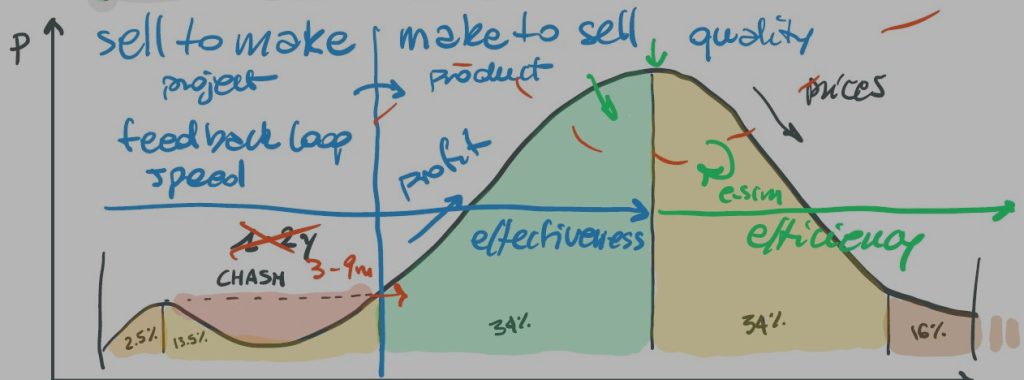To help managers facing the COVID-19 challenges in their organizations, we’ve launched a three part guide on Leading Through the Crisis. This guide is a direct result of our experience of coaching various teams and leaders immediately after the crisis hit and helping them find their new stability.
This guide is for your if you are a manager or a leader feeling as if caught between a rock and a hard place – trying to preserve business continuity and efficiency, be flexible and empathetic with your employees and be innovative about new ways of working, all at the same time.
The environments in which organizations find themselves these days have the characteristics of un-ordered complex systems. And what does this mean? Simply put, it means that there is no prescribed order of things (any more). The order emerges (or not), as a consequence of actions. Being a leader under such circumstances requires a specific behaviour.
Traditional command-and-control management does not work well here. Instead, you should focus on managing constraints of the environment, and to enable running of multiple parallel experiments in order to find new practices that work well.
You need to be able to set the stage, take the back seat and allow patterns to emerge, amplifying positive outcomes and dampening the negative ones. This more experimental way of management often boosts innovation, creativity and search for new business models.
A specific form of unordered system is chaos, characterized by the fact that cause-effect relationships can’t be understood at all, and there are no patterns – everything keeps shifting. The proper leadership response in such an environment is to act fast to establish order, find stability and move things back into the area where constraints exist. There is no time to ask for input here, or to wait for things to emerge. You need to take action, and communicate fast and directly.
The real trick here is in your ability to understand the characteristics of the environment you found yourself in. Applying the wrong type of leadership response to a new situation can be devastating for an organization.
One of the tools that might help you here is Cynefin. It is a sense making framework, describing five decision-making contexts (domains). Unordered ones are labeled as Complex and Chaos. A leader’s behaviour in these domains is specific. If you are a leader responsible for functioning of a certain part of the organization, then you need to be aware of those specifics.
Having tools like Cynefin in your toolbox (and knowing how to use them!) should help you lead your organization through challenging situations.
Interested to learn more about Cynefin and decision making? Let’s talk about it.
Leading Through Crisis 2/3: How to be a Leader of Remote and Disperse Teams
Leading Through Crisis 3/3: How to Lead Organizational Culture in New Reality
Photo by Amy Elting on Unsplash


